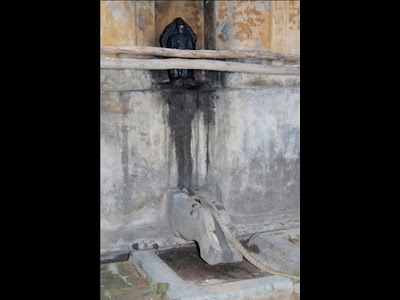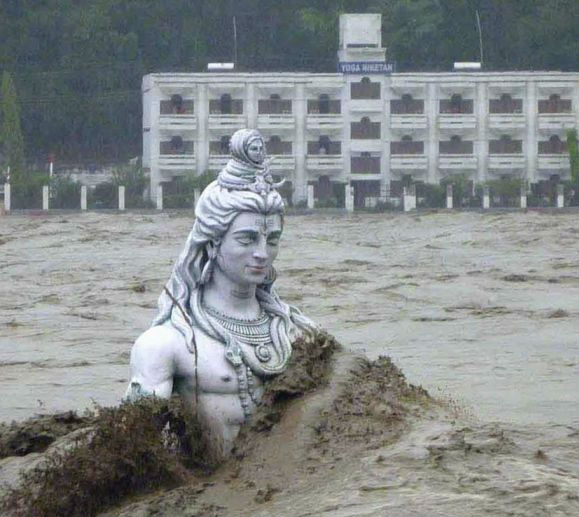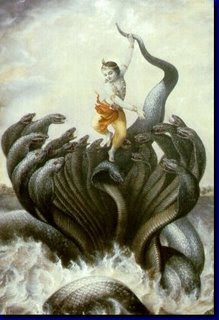Muneeswarar or Muneeswaran (Tamil முனீஸ்வரன்) is a Hindu god
Muneeswarar or Muneeswaran (Tamil முனீஸ்வரன்) is a Hindu god. 'Muni' means 'saint' and 'iswara' represents 'Shiva'. He is considered as a form of Shiva. He is worshiped as a family deity in most Shaivite families.
Origin
 Sati (Dakshayani) was the youngest daughter of Daksha, the chief of the gods. When Sati grew up she set her heart on Shiva, worshipping him in secret. In the Swayamvara of Sati, Daksha invited all gods and princes except Shiva. Sati cast her wreath into air, calling upon Shiva to receive the garland; and behold him stood in midst of the court with the wreath about his neck. Daksha had no choice but to marry Sati with Shiva. One day Daksha made arrangements for a great horse sacrifice, and invited all the gods omitting only Shiva. Sati, being greatly humiliated, went to the banquet and Sati released the inward consuming fire and fell dead at Daksha's feet. When Shiva heard this news, he burned with anger, and tore from his head a lock of hair, glowing with energy, and cast upon the earth. Vīrabhadra sprang from it, his tall body reached the high heavens, he was dark as the clouds, he had a thousand arms, three burning eyes, and fiery hair; he wore a garland of skulls and carried terrible weapons. Vīrabhadra bowed at Shiva's feet and asked his will. Shiva directed Vīrabhadra: "Lead my army against Daksha and destroy his sacrifice; fear not the Brahmanas, for thou art a portion of my very self". On this direction of Shiva, Vīrabhadra appeared with Shiva's ganas in the midst of Daksha's assembly like a storm wind and broke the sacrificial vessels, polluted the offerings, insulted the priests and finally cut off Daksha's head, trampled on Indra, broke the staff of Yama, scattered the gods on every side.Local folklore says, that in order to protect the souls, Shiva created Muneeswara. He possessed seven qualities, and based on them he was called as Shivamuni, Mahamuni, Thavamuni, Naathamuni, Jadamuni, Dharammamuni, Pandi Muni, Eswara Muni, Vazhamuni.
Sati (Dakshayani) was the youngest daughter of Daksha, the chief of the gods. When Sati grew up she set her heart on Shiva, worshipping him in secret. In the Swayamvara of Sati, Daksha invited all gods and princes except Shiva. Sati cast her wreath into air, calling upon Shiva to receive the garland; and behold him stood in midst of the court with the wreath about his neck. Daksha had no choice but to marry Sati with Shiva. One day Daksha made arrangements for a great horse sacrifice, and invited all the gods omitting only Shiva. Sati, being greatly humiliated, went to the banquet and Sati released the inward consuming fire and fell dead at Daksha's feet. When Shiva heard this news, he burned with anger, and tore from his head a lock of hair, glowing with energy, and cast upon the earth. Vīrabhadra sprang from it, his tall body reached the high heavens, he was dark as the clouds, he had a thousand arms, three burning eyes, and fiery hair; he wore a garland of skulls and carried terrible weapons. Vīrabhadra bowed at Shiva's feet and asked his will. Shiva directed Vīrabhadra: "Lead my army against Daksha and destroy his sacrifice; fear not the Brahmanas, for thou art a portion of my very self". On this direction of Shiva, Vīrabhadra appeared with Shiva's ganas in the midst of Daksha's assembly like a storm wind and broke the sacrificial vessels, polluted the offerings, insulted the priests and finally cut off Daksha's head, trampled on Indra, broke the staff of Yama, scattered the gods on every side.Local folklore says, that in order to protect the souls, Shiva created Muneeswara. He possessed seven qualities, and based on them he was called as Shivamuni, Mahamuni, Thavamuni, Naathamuni, Jadamuni, Dharammamuni, Pandi Muni, Eswara Muni, Vazhamuni.
As he appeared from Lord Siva's face. He assumed the form of Shivamuni.
He became Mahamuni who possessed immeasurable divine power.
Thavamuni removed all obstacles in the path of the Thevars and Rishis during their Yajna.
Nathamuni offered blessings to the Devagananga and Puthaganga.
Jadamuni grew trees and possessed Rudrakshamala Kaatgar and the book.
Dharmamuni was the protector of the good and the destroyer of evil.
Vazhamuni is praised and worshipped by the Kapalis who live in the jungle.
Worship
The cult of Muneeswarar is popular in India, Singapore and Malaysia, with many temples dedicated to him. Since his weapon is the trident, Muneeswarar temples will contain a trident placed in the ground, and limes are placed upon the prongs of the trident. In most villages in India the deity is a laid stone. When statues of Muneeswarar are used, they are painted, in contrast to the black granite statues in other Indian temples. His statue is dressed in a dhoti, unlike the statues of the other Gods.
Muneeswarar is generally worshiped either as a fierce God or a peaceful God. Those who worship his fierce form offer Him animal like lamb and chicken.
Source : Muneeswarar or Muneeswaran (Tamil முனீஸ்வரன்) is a Hindu god










 Panchami means the fifth and on the fifth day of the bright half of Shravana, nagas (serpents) are worshipped. Snakes symbolize energy and prosperity. Snake-worship is pre-Aryan and was incorporated into the Aryan religion at an early stage.
Panchami means the fifth and on the fifth day of the bright half of Shravana, nagas (serpents) are worshipped. Snakes symbolize energy and prosperity. Snake-worship is pre-Aryan and was incorporated into the Aryan religion at an early stage.








